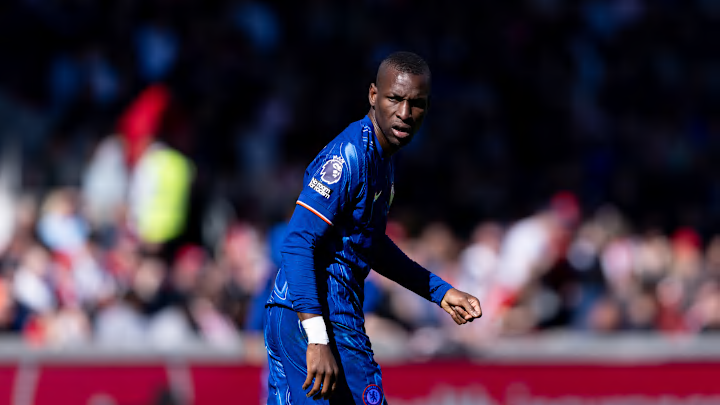Last weekend, Enzo Maresca faced one of the most tactically astute managers and well-drilled sides in the league—Thomas Frank’s Brentford. After a 1-0 victory over Spurs, Maresca rotated the side heavily, with Cole Palmer and Nicolas Jackson notably on the bench.
The game ended 0-0 despite the many chances both sides created. This article analyzes the various tactical talking points and evaluates them in detail.
Out-of-Possession Structure: Chelsea’s High Press
When teams control possession in a match, it often stems from their out-of-possession (OOP) intent. This was no different in the Brentford–Chelsea tie, as the visitors applied an aggressive press to force turnovers when the Bees tried to build up.
Against Brentford’s 4-2-4 build-up shape, Chelsea pressed high with Noni Madueke (the right winger) pressing Brentford's left centre-back, Sepp van den Berg, whilst shadow covering the left-back, Keane Lewis-Potter. However, Chelsea’s OOP plan was permeable.
As Mark Flekken kicked the ball long, the other responsibilities across the pitch became apparent. Jadon Sancho closely tracked Kristoffer Ajer (Brentford’s right-back), while Chelsea’s midfielders man-marked Brentford’s central players. This OOP system enabled the Blues to maintain a man surplus at the back, with a -1 press from the frontline allowing better competition for long balls and providing coverage against Brentford’s forward movement.
As Mark Flekken kicks the ball long, you can see the other responsibilities across the pitch. Sancho is tightly following the right-back, Kristoffer Ajer whilst the midfielders have man-marked Brentford in the middle.
— Fahd (@fahdahmed987) April 10, 2025
Furthermore, this OOP system allows Chelsea to maintain a man… pic.twitter.com/ehRjICs9kS
